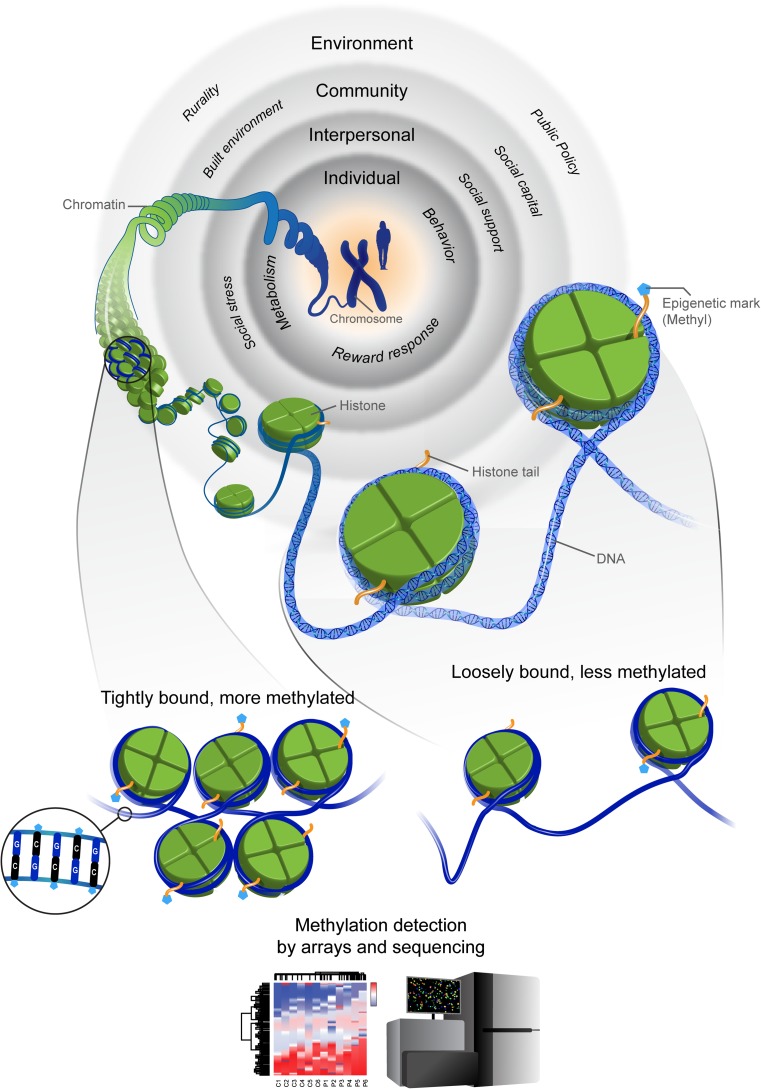Fig. 1.
Conceptualizing the exposome and epigenetic processes. The blue strands of DNA are wrapped in a dynamic and functional structure called chromatin. As illustrated in the figure, the DNA is wound around histones. Histone tails receive modifications, or epigenetic marks, that turn on or turn off gene expression. One such modification is methylation, in which a methyl group, represented by the blue pentagon, attaches to the histone tail. DNA is wrapped more tightly around histones that are highly methylated, restricting accessibility of the DNA to be read for gene expression. Methylation of DNA occurs in areas of density in cytosine nucleotides and guanine nucleotides (CpG islands). Epigenetic processes can occur in response to nested levels of exposures depicted at the: individual, interpersonal, community, and environmental levels; each can influence epigenetic modifications independently or jointly. Epigenetic responses may result in more methylation that tightens the chromatin bond “turning off” gene expression; or, such processes may give rise to demethylation, resulting in loosely bound chromatin “turning on” gene expression. Thus, detecting the amount of methylation across the genome or within a particular gene using arrays or with sequencing technologies can provide evidence of epigenetic responses to a set of exposures (Color figure online)

